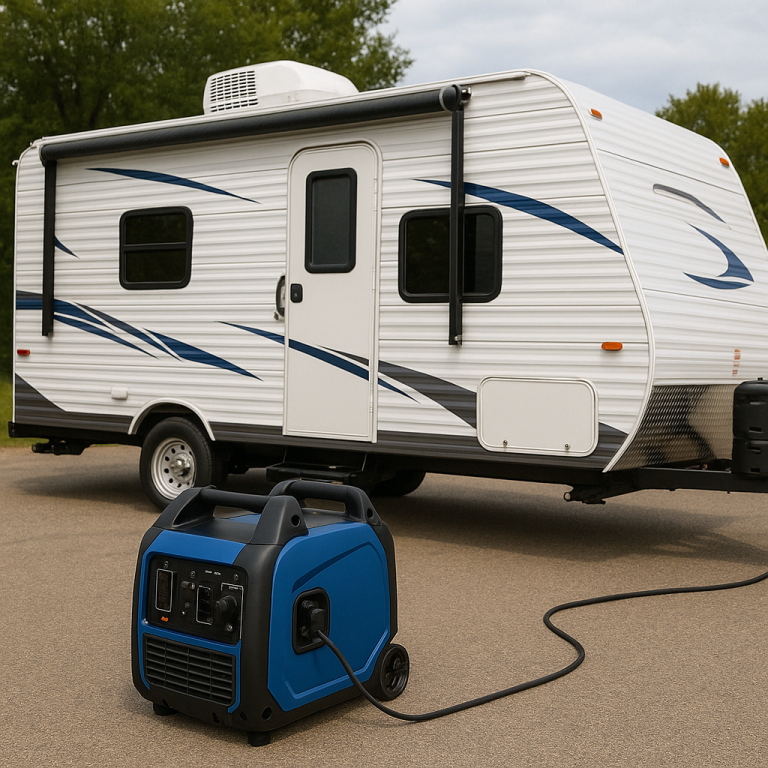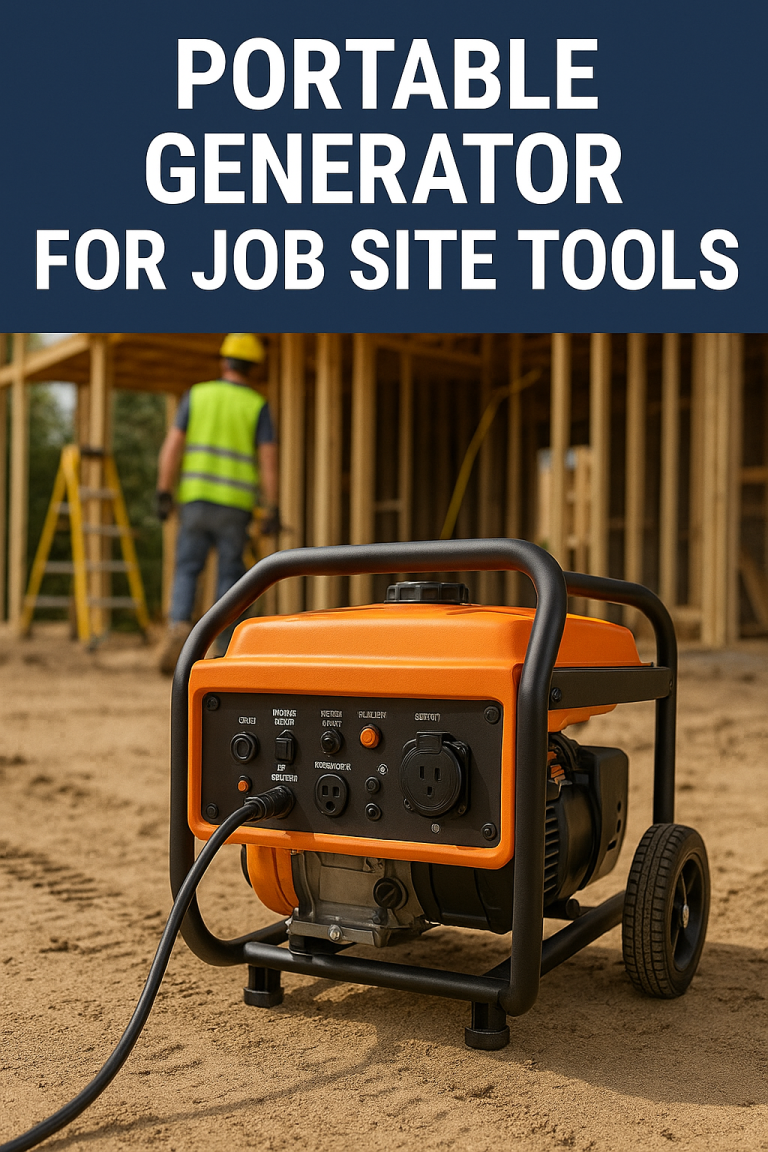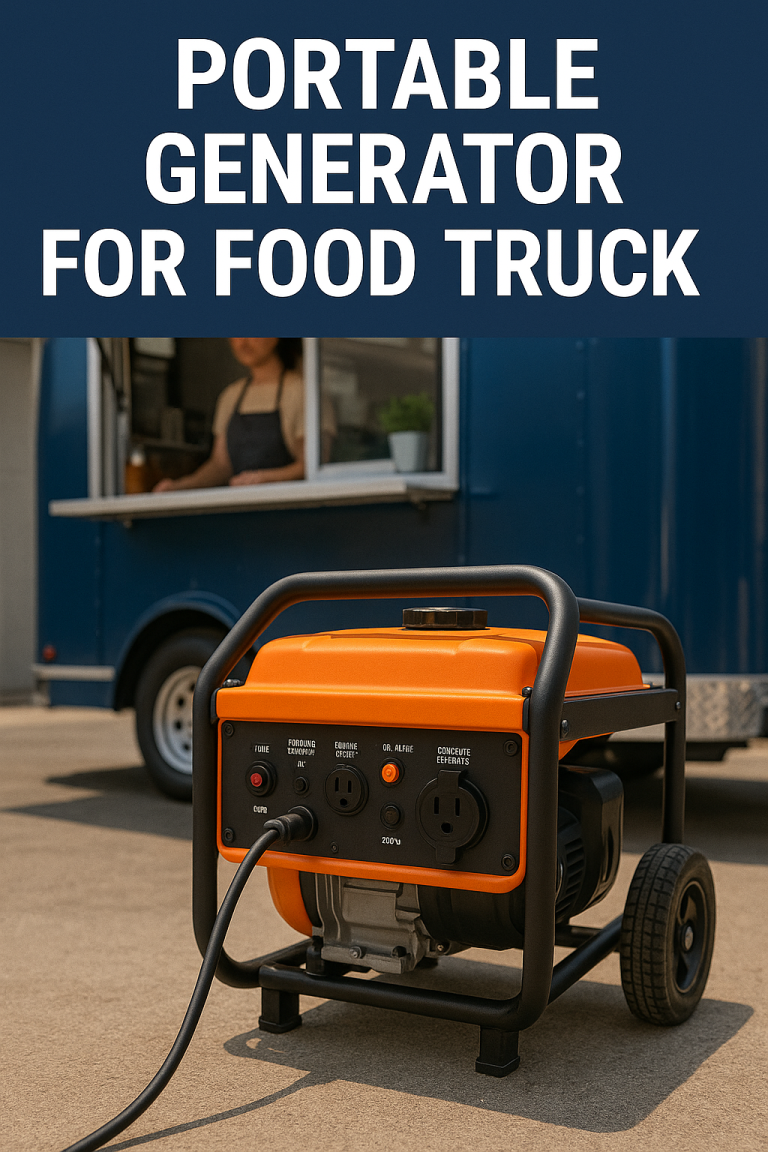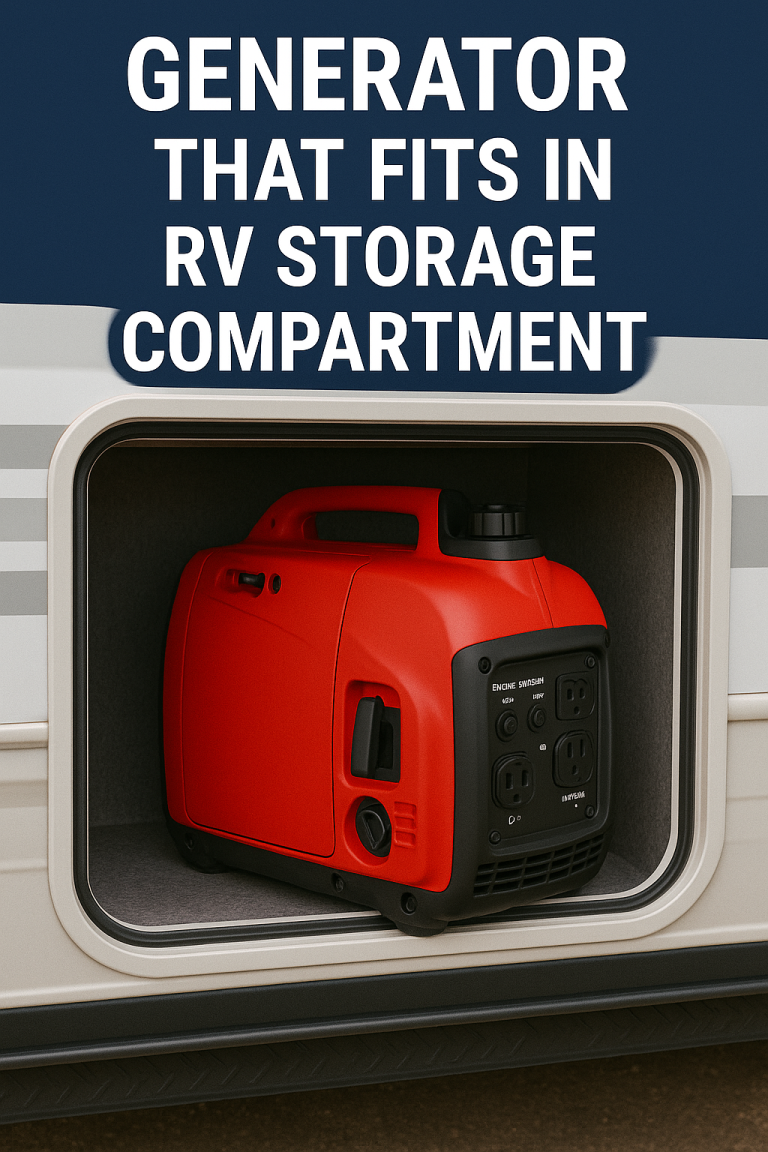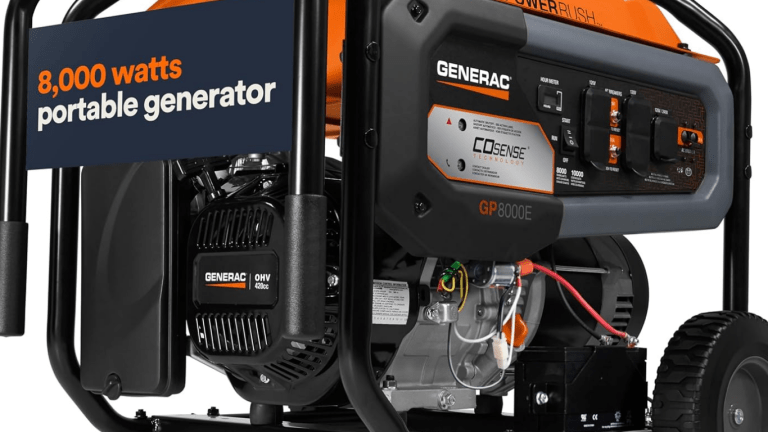Dual Fuel Generator for Power Outages – Power You Can Count On
Power outages can strike without warning — from hurricanes and blizzards to grid overloads and rolling blackouts. One moment your home is humming with electricity, and the next, you’re left in the dark. That’s where a dual fuel generator for power outages becomes a true lifeline.
Unlike standard gas-only generators, dual fuel models give you flexibility, longer runtimes, and better fuel security. They can run on either gasoline or propane, giving you two options to keep your home powered when it matters most. In this guide, we’ll break down why dual fuel is a smart investment, how to choose the right model, and the key features to look for when preparing for emergency situations.
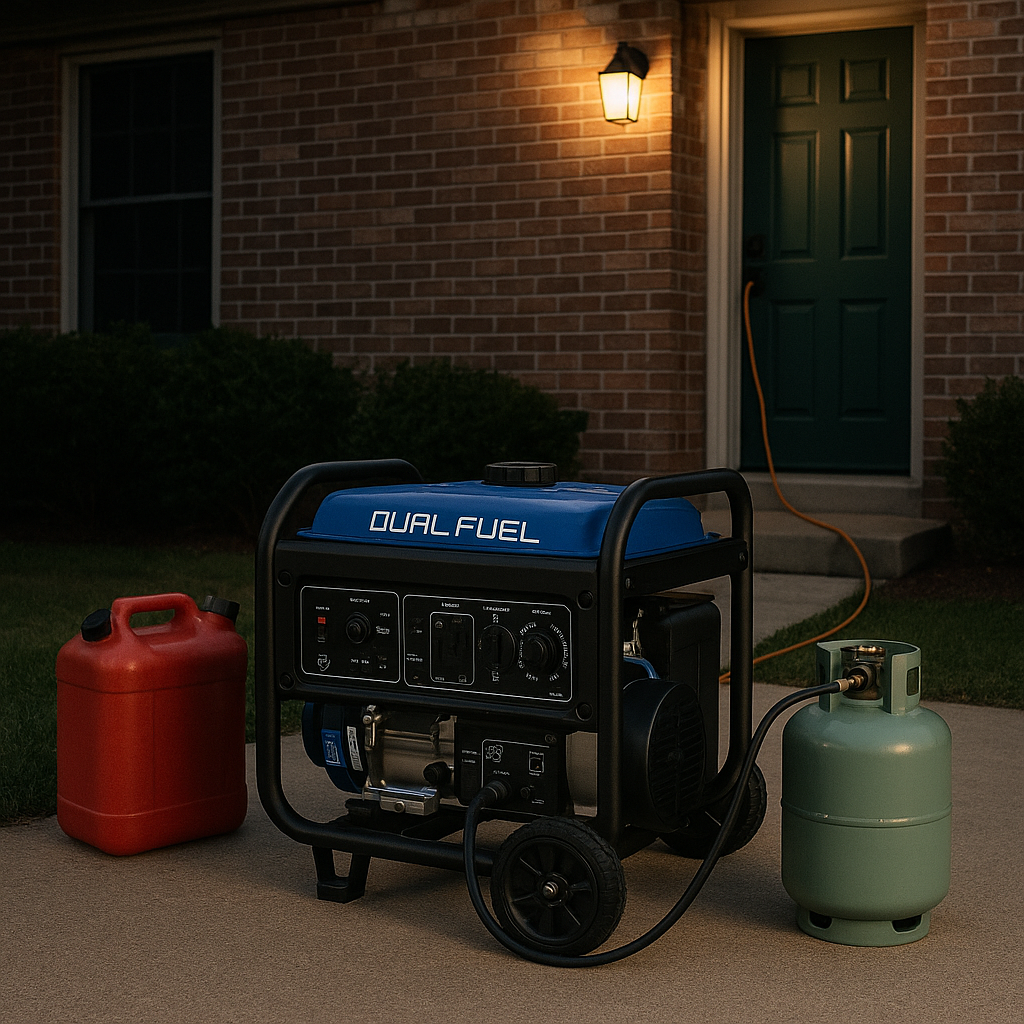
What Is a Dual Fuel Generator?
A dual fuel generator is exactly what it sounds like — a generator that can run on two different types of fuel, typically gasoline and propane. With a simple switch or dial, you can choose which fuel source to use based on what’s available, what’s safer to store, or what gives you the longest runtime.
This flexibility makes dual fuel generators ideal for:
- Long-term power outages
- Emergency preparedness
- Off-grid living
- Areas where fuel access may be limited
If you’ve ever been caught during a storm with empty gas stations or frozen pumps, you’ll instantly understand the advantage of having a second fuel option on hand.
Why Choose a Dual Fuel Generator for Power Outages?
When your power goes out, the last thing you want is to depend on just one fuel source. Here’s why dual fuel generators are quickly becoming the go-to choice for homeowners, preppers, and emergency planners:
Fuel Flexibility
During emergencies, fuel shortages are common. Gasoline can be hard to find during hurricanes or blackouts, while propane may be easier to access or already stored in your home. With a dual fuel generator, you’re never stuck relying on just one option.
Longer Runtime
Propane typically burns cleaner and longer than gasoline. You can get extended runtimes with large propane tanks, which is critical if you want overnight power or multi-day coverage without constant refueling.
Better Fuel Storage
Propane can be stored indefinitely in sealed tanks without degrading, unlike gasoline, which can go bad after a few months unless treated. Having a few full propane tanks stored safely gives you instant backup power without the worry of stale fuel.
Cleaner Burning
When running on propane, dual fuel generators emit fewer emissions, burn cleaner, and create less carbon buildup in the engine. This results in longer engine life and easier maintenance.
Emergency Readiness
In a blackout, gasoline pumps don’t work without electricity. But if you already have propane tanks on hand (like for your grill or heater), you’re instantly prepared to power your essentials.
How Much Power Do You Need?
The size of your dual fuel generator depends on what you want to power during an outage. Here’s a general idea:
- For essential circuits only (like refrigerator, lights, fans, router): aim for 3500–5000 running watts
- For larger homes with multiple appliances, go for 7000–10,000+ running watts
- To run central AC, electric water heaters, or full-home coverage, consider whole-house generators over 12,000 watts
Most dual fuel portable generators fall in the 4000–12,000 watt range, making them ideal for powering multiple appliances, tools, or emergency circuits at once.
What Can a Dual Fuel Generator Power During an Outage?
A mid-sized dual fuel generator (around 7500 watts) can keep your home running comfortably during an outage. Here’s what you can typically power:
- Refrigerator and freezer
- Microwave or toaster oven
- Coffee maker
- Lights and lamps
- TVs and Wi-Fi routers
- Fans or small heaters
- Well pump or sump pump
- CPAP machine or medical devices
- Washer and some low-wattage power tools
If your generator has a 240V outlet, you can also connect it to your transfer switch and power key household circuits directly — a safer and more convenient option than running extension cords.
Key Features to Look For in a Dual Fuel Generator
Not all generators are created equal. Here’s what to prioritize when choosing one for power outages:
Electric Start
Forget yanking a pull cord in the middle of a storm. An electric start lets you fire up the generator with a push of a button. Look for models with built-in battery starters or remote start options for added convenience.
Transfer Switch Ready
If you want to power your home’s electrical panel directly, choose a generator with a 30-amp or 50-amp outlet and make sure it’s transfer switch compatible. This allows for safer, faster power delivery during outages.
Runtime and Tank Size
Look for a generator that offers 8 to 12 hours of runtime at 50% load on either fuel. Larger gas tanks and propane compatibility help you go longer between refuels — especially helpful overnight or during extreme weather.
Surge Wattage
Make sure the generator can handle appliance startup surges, especially for fridges, freezers, and HVAC equipment. A model with high surge watts (over 9000) provides extra protection and capacity during power spikes.
Durable Build and Portability
Choose a generator with a steel frame, never-flat wheels, and a folding handle so it’s easy to move and store. It should be tough enough for outdoor use but mobile enough to wheel out during emergencies.
Safety Features
Modern generators come with carbon monoxide shutoff sensors, low-oil protection, overload alarms, and grounding systems. Don’t skip these — they’re essential for safe operation near your home.
How to Use a Dual Fuel Generator Safely During a Power Outage
Safety should always come first. Follow these essential tips when using your generator:
- Never run it indoors — always place it outside, at least 20 feet away from doors, windows, or vents
- Use heavy-duty outdoor-rated extension cords
- Let the generator cool before refueling
- Store propane tanks upright and outdoors in a safe location
- Use a transfer switch for direct home circuit connection — never backfeed into your home’s electrical panel
- Install CO detectors in your home for added protection
It’s also a good idea to test your generator setup regularly. Start it once a month, run it under load, and check all fuel sources to ensure everything works before an actual emergency.
Propane or Gasoline: Which Should You Use First?
There’s no one right answer — but here’s a good strategy for emergencies:
- Start with gasoline if it’s fresh and available. Use it first because it spoils faster over time.
- Switch to propane once gas is low or depleted. Propane burns cleaner and lasts longer in storage.
- Keep at least two full propane tanks on hand for backup.
Having both fuels available gives you flexibility to adapt to the situation, whether it’s a week-long outage or a short storm-related blackout.
Final Thoughts: Be Ready for Anything with a Dual Fuel Generator
When the lights go out, a dual fuel generator gives you more than just power — it gives you peace of mind, flexibility, and real independence from a fragile electrical grid.
With the ability to run on gasoline or propane, you’re always covered — no matter what the fuel situation is. Whether you want to power a few key appliances or keep your whole home running, dual fuel generators deliver the performance and reliability needed to weather any storm.
To recap:
- Choose a model with at least 4000+ watts for basic home use
- Prioritize electric start, long runtimes, and transfer switch compatibility
- Always run the unit outdoors with proper safety measures
- Stock up on both fuel types — and test your setup before emergencies hit
When the next outage comes, you’ll be ready — lights on, fridge cold, and fully in control.

